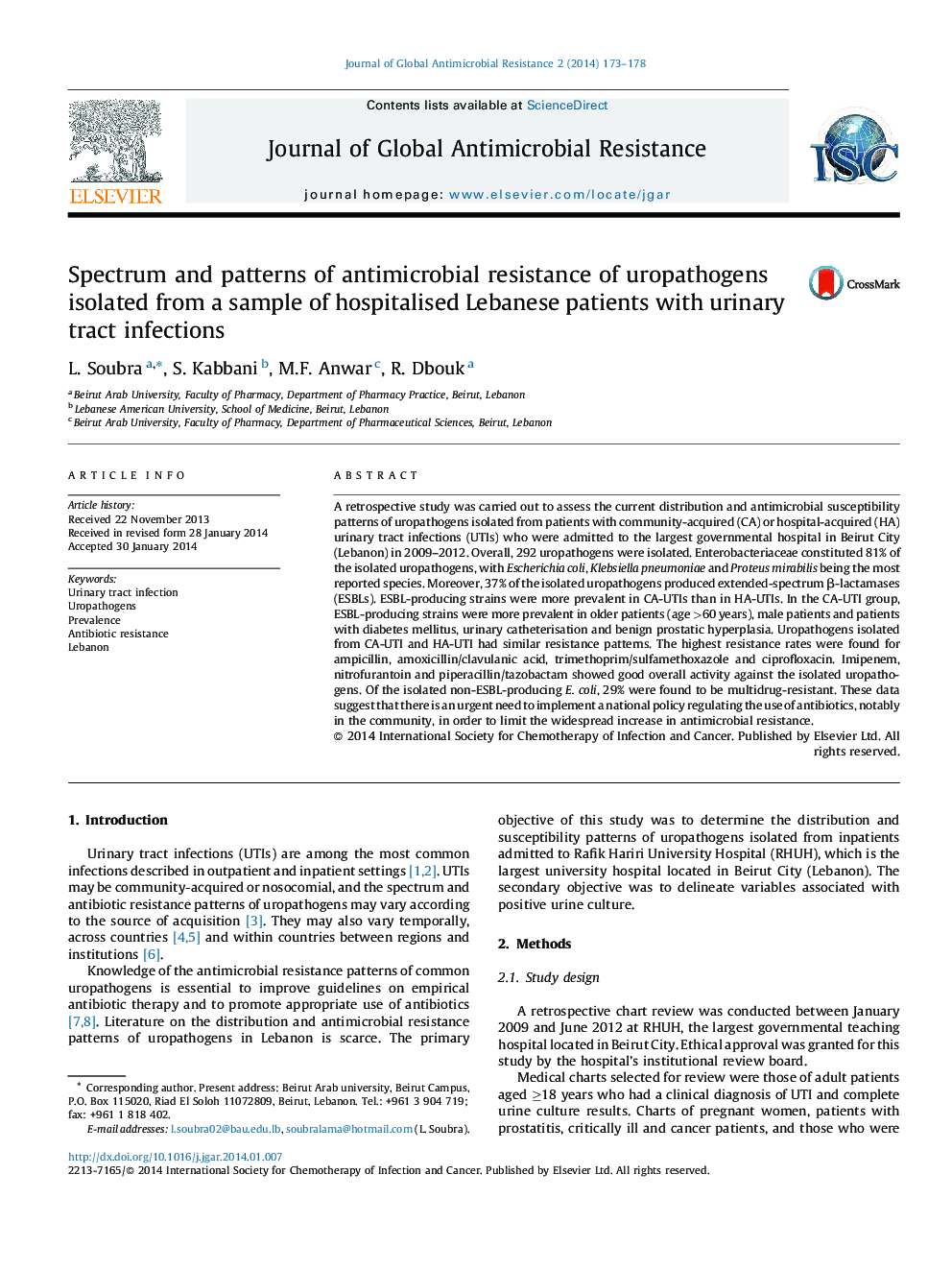| Article ID | Journal | Published Year | Pages | File Type |
|---|---|---|---|---|
| 3405725 | Journal of Global Antimicrobial Resistance | 2014 | 6 Pages |
A retrospective study was carried out to assess the current distribution and antimicrobial susceptibility patterns of uropathogens isolated from patients with community-acquired (CA) or hospital-acquired (HA) urinary tract infections (UTIs) who were admitted to the largest governmental hospital in Beirut City (Lebanon) in 2009–2012. Overall, 292 uropathogens were isolated. Enterobacteriaceae constituted 81% of the isolated uropathogens, with Escherichia coli, Klebsiella pneumoniae and Proteus mirabilis being the most reported species. Moreover, 37% of the isolated uropathogens produced extended-spectrum β-lactamases (ESBLs). ESBL-producing strains were more prevalent in CA-UTIs than in HA-UTIs. In the CA-UTI group, ESBL-producing strains were more prevalent in older patients (age >60 years), male patients and patients with diabetes mellitus, urinary catheterisation and benign prostatic hyperplasia. Uropathogens isolated from CA-UTI and HA-UTI had similar resistance patterns. The highest resistance rates were found for ampicillin, amoxicillin/clavulanic acid, trimethoprim/sulfamethoxazole and ciprofloxacin. Imipenem, nitrofurantoin and piperacillin/tazobactam showed good overall activity against the isolated uropathogens. Of the isolated non-ESBL-producing E. coli, 29% were found to be multidrug-resistant. These data suggest that there is an urgent need to implement a national policy regulating the use of antibiotics, notably in the community, in order to limit the widespread increase in antimicrobial resistance.
